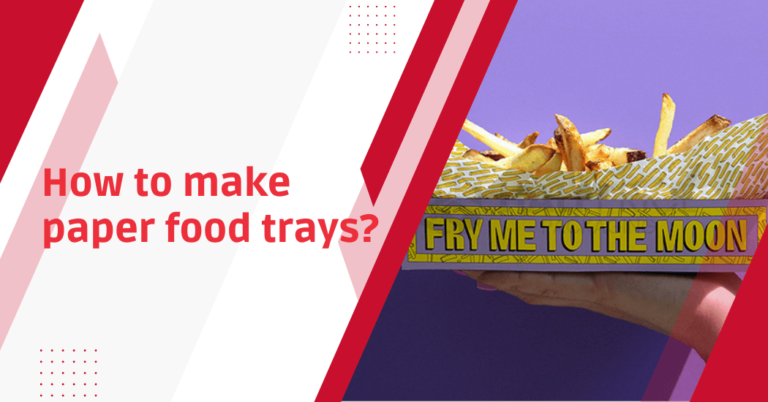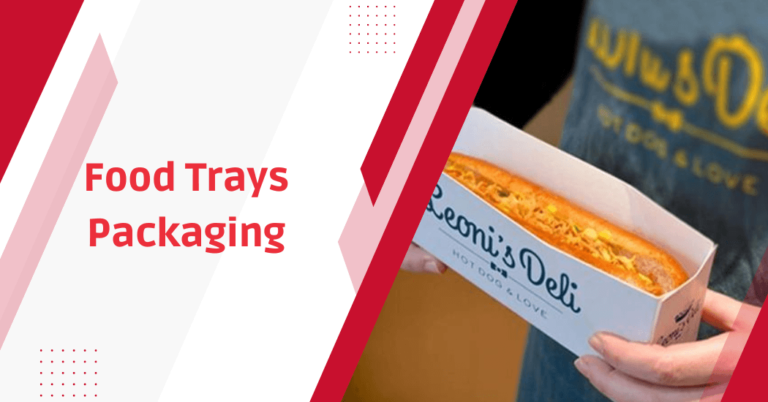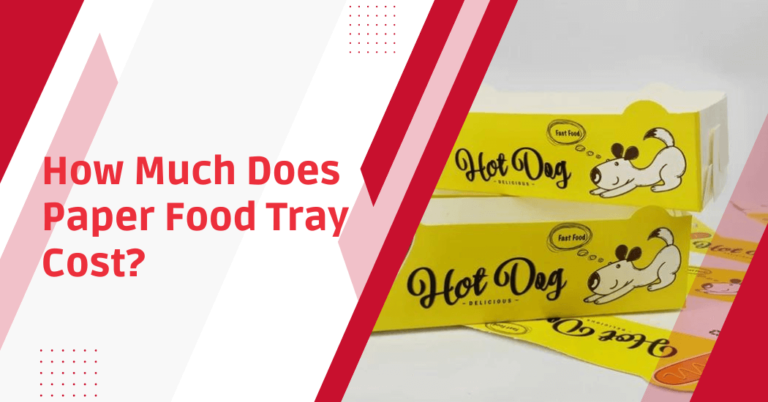How to Recycle Plastic Food Trays?
In the current eco-conscious world, the question “Can plastic food trays be recycled?” is more pertinent than ever. With the mounting concerns over plastic pollution and its long-lasting impacts on our environment, understanding the recyclability of everyday items such as plastic food trays becomes crucial.
In this article we aim to shed light on whether plastic food trays can be recycled, exploring the materials they are made from, the recycling processes involved and the challenges faced by recycling facilities.
By providing insight into this topic, we aspire to help consumers make informed decisions regarding their plastic use and contribute to a more sustainable planet.
Can plastic food trays be recycled?
The answer to this question is not a simple yes or no. It depends on the type of plastic used, as well as the facilities available for recycling in your area.
Plastic food trays are typically made from PET (polyethylene terephthalate) or PP (polypropylene) plastics, which are both widely used for packaging due to their durability and ability to preserve food. These plastics are also recyclable but the process differs for each type.
PET plastic is commonly used for water and soda bottles and its recycling involves shredding the plastic into flakes, melting them down and then stretching it into new fibers to create a variety of products such as clothing or carpets. On the other hand, PP plastic can be melted, purified and turned into pellets to be used in the manufacturing of new products.
However, it’s best to check with your local recycling program or facility to determine if plastic food trays are accepted for recycling in your area and if there are any specific guidelines for preparing them for recycling, such as rinsing them clean before placing them in the recycling bin.
Types of plastic food trays and their recyclability
Plastic food trays come in different shapes, sizes and materials. Here are some common types of plastic food trays and their recyclability:
- PET (polyethylene terephthalate) trays: These are transparent, rigid trays that are commonly used for packaging fruits, vegetables and baked goods. They are widely accepted for recycling.
- PP (polypropylene) trays: These are usually opaque or semi-transparent and they can be used for packing meat, deli items or frozen foods. PP trays are also recyclable in most areas.
- Styrofoam trays: These are not typically accepted for recycling as they are made from expanded polystyrene (EPS) which is difficult to recycle and takes a long time to decompose in landfills.
- Compostable trays: Some food trays may be labeled as compostable, which means they can break down into natural materials when exposed to certain conditions. However, not all compostable trays can be accepted for curbside composting and may require special facilities to be properly composted.
- Polyvinyl chloride (PVC): This type of plastic is often used for clamshell-style food containers and it is not widely accepted for recycling. PVC can release harmful chemicals when incinerated, making it a challenging material to recycle.
- High-density polyethylene (HDPE): This type of plastic is used for milk bottles, juice containers and some food trays. It is generally accepted for recycling but not all facilities can recycle HDPE food trays due to contamination with food residue.
It’s important to check the label on your plastic food tray or contact your local recycling program to determine if it can be recycled in your area.
Factors that influence the recyclability of plastic food trays
Various factors can affect the recyclability of plastic food trays:
- Contamination: If a plastic food tray is not properly rinsed and cleaned before being recycled, it can contaminate other materials in the recycling stream. Food residue can also attract pests and bacteria, making it difficult to recycle.
- Type of plastic: Different types of plastics require different recycling processes. If a facility is not equipped to handle a specific type of plastic, the tray may end up in a landfill.
- Design and Composition: The design and composition of the food trays can impact their recyclability. Complex designs, multi-layered trays or those with mixed materials (e.g., plastic combined with foil) can be more challenging to recycle.
- Market demand: The demand for recycled materials can also influence the recyclability of plastic food trays. If there is no market for recycled material, it may not be economically feasible for a recycling facility to process it.
- Infrastructure: Not all areas have the necessary infrastructure and facilities to recycle certain types of plastics. This can limit the recyclability of plastic food trays in certain regions.
- Consumer behavior: As consumers, our actions can also impact the recyclability of plastic food trays. Properly sorting and preparing plastic food trays for recycling can help improve their chances of being recycled.
By understanding these factors, we can make more informed decisions about our plastic use and potentially reduce the amount of plastic waste that ends up in landfills.
Recycling process for plastic food trays
The recycling process for plastic food trays is similar to that of other plastics. It typically involves the following steps:
- Collection: Plastic food trays are collected from households, businesses or other sources and transported to a recycling facility.
- Sorting: Once at the facility, the plastic trays are sorted by type and color using optical scanners and magnets.
- Cleaning: The trays are then cleaned and any remaining food or debris is removed.
- Shredding: The trays are shredded into small pieces to prepare them for melting.
- Melting and Purification: The shredded plastic is melted down, filtered and purified to remove any impurities.
- Pelletizing: The purified plastic is formed into pellets which can be used in the manufacturing of new products.
- Distribution: The recycled material is then distributed to manufacturers who can use it to produce new plastic products.
By participating in proper recycling practices and supporting the demand for recycled materials, we can contribute to a more sustainable future for our planet. So next time you finish your meal on a plastic food tray, remember to check if it can be recycled and do your part in reducing plastic waste.
Environmental impact of plastic food tray recycling
Recycling plastic food trays has several positive impacts on the environment, including:
- Reduction of landfills: By recycling plastic food trays, we can prevent them from ending up in landfills where they take hundreds of years to decompose.
- Conservation of resources: Recycling plastic reduces the need for virgin materials, such as crude oil, which is used to make plastic. This helps conserve natural resources and reduces the environmental impact of extracting these resources.
- Reduced greenhouse gas emissions: The production of virgin plastic releases significant amounts of greenhouse gases into the atmosphere. Recycling plastic food trays can help reduce these emissions and mitigate their contribution to climate change.
- Less pollution: Plastic waste is a major contributor to environmental pollution, especially in our oceans and waterways. By recycling plastic food trays, we can prevent them from polluting our environment.
- Energy savings: It takes less energy to recycle plastics than to produce them from raw materials. This helps reduce the consumption of non-renewable resources and the associated environmental impacts.
Recycling plastic food trays has numerous benefits for the environment, making it an important step towards a more sustainable future. It’s up to all of us to do our part in properly recycling and reducing plastic waste.
Challenges in plastic food trays recycling
Despite the benefits of recycling plastic food trays, there are still challenges that need to be addressed to improve the process and increase its effectiveness. These challenges include:
- Lack of uniformity: There is no standard design or composition for plastic food trays, making it difficult for recycling facilities to develop a streamlined process.
- Lack of education and awareness: Many people are still unaware of the importance of recycling plastic food trays and how to properly prepare them for recycling. This can lead to contamination and reduce the quality of the recycled material.
- Contamination: Contamination from food residue, liquids or other materials can reduce the quality and value of recycled plastic. This makes it less desirable for manufacturers to use in their products.
- High cost: The recycling process for plastic food trays can be costly, especially if the tray is made from a complex design or multiple layers of different materials.
- Inconsistent policies and infrastructure: The lack of consistent recycling policies and infrastructure across different regions can make it difficult to establish a successful recycling program for plastic food trays.
As we continue to address these challenges, individuals, businesses and governments need to work together towards improving the recycling process for plastic food trays. This will not only benefit the environment but also create a more sustainable future for generations to come.
Alternatives to recycling plastic food trays
While recycling plastic food trays is crucial for reducing waste and protecting the environment, there are also alternatives to consider that can further minimize our impact on the planet.
- Biodegradable or compostable food trays: These types of food trays are made from plant-based materials that break down naturally over time. They are a more eco-friendly alternative to traditional plastic trays.
- Reusable food containers: Instead of using disposable plastic food trays, consider investing in reusable containers that can be washed and used multiple times. This helps reduce the amount of waste generated.
- Switch to paper or aluminum packaging: Paper and aluminum are more easily recyclable than plastic, making them better alternatives for packaging foods.
- Reduce overall consumption: By reducing our overall consumption of packaged foods, we can minimize the need for plastic food trays and other packaging materials.
While these alternatives may not be feasible for all situations, incorporating them into our daily habits and routines can make a significant impact on reducing waste and protecting the environment.
Comparison with alternatives
| Aspect | Recycling Plastic Food Trays | Biodegradable/Compostable Food Trays | Reusable Food Containers | Paper Packaging |
|---|---|---|---|---|
| Environmental impact | Reduces waste and pollution | Breaks down naturally over time | Reduces waste | Easily recyclable |
| Cost | Can be costly to recycle | More expensive than traditional | Cost-effective in the long run | Varies, depending on type |
| Convenience | Easy and widely available | Limited availability | Requires cleaning | Widely available |
| Effectiveness | Depends on proper recycling | May not break down completely | Can be used multiple times | Easily recyclable |
| Practicality | Depends on recycling policies and infrastructure | May not be accepted by all facilities | Easy to incorporate into daily habits | Widely available |
Each of these alternatives has its own advantages and disadvantages. While recycling plastic food trays is currently the most widespread option, it may not always be the most practical or environmentally friendly choice.
FAQs – Plastic Tray Recyclability
How can I identify if a plastic food tray is recyclable?
Look for the recycling symbol on the bottom of the food tray, usually accompanied by a number between 1-7. This symbol indicates the type of plastic used in manufacturing. Not all recycling facilities accept all types of plastic, so make sure to check with your local facility first.
Can plastic food trays with food residue still be recycled?
Plastic food trays with food residue can often present challenges in the recycling process. While some recycling facilities can clean and process these items, many do not. It’s important to rinse and remove as much food residue as possible before recycling to prevent contamination of the recycling stream.
Heavily soiled plastics may be sorted out and sent to landfills, so cleaning them helps ensure they are recycled. Always consult with your local recycling guidelines to understand the specific requirements and capabilities of recycling centers in your area.
Are there any restrictions on recycling plastic food trays?
Some recycling facilities may have certain restrictions on what type of plastic food trays they accept. For example, some may only accept clear or transparent trays while others may not accept black plastic trays due to difficulties in sorting and identifying them during the recycling process.
It’s important to check with your local facility for any specific guidelines or restrictions before attempting to recycle plastic food trays.
Can I recycle plastic food trays with other types of plastics?
It is generally recommended to separate different types of plastics before recycling, as they may have different melting points and can contaminate each other during the recycling process. However, some facilities may accept multiple types of plastics in a single bin.
It’s best to check with your local facility for any specific guidelines on sorting plastics before recycling.
What should I do if my local recycling program doesn’t accept plastic food trays?
If your local recycling program does not accept plastic food trays, there are still steps you can take to reduce waste and make a positive impact on the environment. Consider using alternative options like biodegradable or reusable food containers and properly disposing of any plastic food trays in the trash.
Additionally, you can reach out to your local government officials or waste management companies to advocate for improved recycling programs and infrastructure. Every small step towards sustainability counts.
Conclusion
In conclusion, while plastic food trays can indeed be recycled, the feasibility and effectiveness of recycling largely depend on several factors such as local recycling infrastructure, the type of plastic used and contamination levels.
Initiatives aimed at increasing awareness, improving recycling facilities and implementing sustainable practices in both manufacturing and consumer behavior are crucial steps towards maximizing the recycling potential of plastic food trays.
Ultimately, a concerted effort from all stakeholders is needed to address the environmental challenges posed by plastic waste and pave the way for a more sustainable future.






